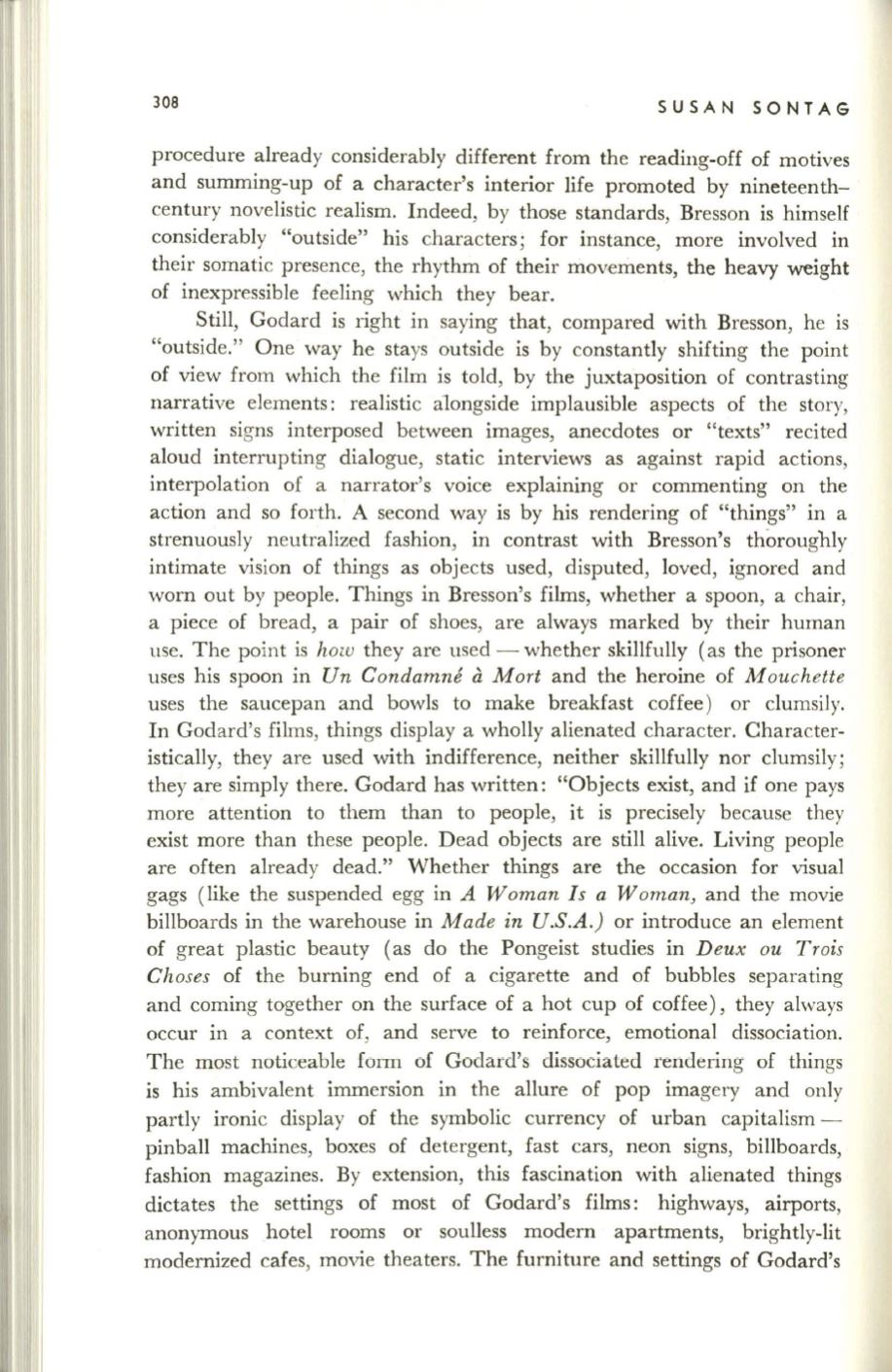
308
SUSAN SONTAG
procedure already considerably different from the reading-off of motives
and summing-up of a character's interior life promoted by nineteenth–
century novelistic realism. Indeed, by those standards, Bresson is himself
considerably "outside" his characters; for instance, more involved in
their somatic presence, the rhythm of their mo,'ements, the heavy weight
of inexpressible feeling which they bear.
Still, Godard is right in saying that, compared with Bresson, he is
"outside." One way he stays outside is by constantly shifting the point
of view from which the film is told, by the juxtaposition of contrasting
narrative elements: realistic alongside implausible aspects of the story,
written signs interposed between images, anecdotes or "texts" recited
aloud interrupting dialogue, static interviews as against rapid actions,
interpolation of a narrator's voice explaining or commenting on the
action and so forth. A second way is by his rendering of "things" in a
strenuously neutralized fashion, in contrast with Bresson's thoroughly
intimate vision of things as objects used, disputed, loved, ignored and
worn out by people. Things in Bresson's films, whether a spoon, a chair,
a piece of bread, a pair of shoes, are always marked by their human
use. The point is
how
they are used - whether skillfully (as the prisoner
uses his spoon in
Un Condamne
a
Mort
and the heroine of
Mouchette
uses the saucepan and bowls to make breakfast coffee) or clumsily.
In Godard's films, things display a wholly alienated character. Character–
istically, they are used with indifference, neither skillfully nor clumsily;
they are simply there. Godard has written: "Objects exist, and if one pays
more attention to them than to people, it is precisely because they
exist more than these people. Dead objects are still alive. Living people
are often already dead." Whether things are the occasion for visual
gags (like the suspended egg in
A Woman I s a Woman,
and the movie
billboards in the warehouse in
Made in U.S.A.)
or introduce an element
of great plastic beauty (as do the Pongeist studies in
Deux au Trois
Chases
of the burning end of a cigarette and of bubbles separating
and coming together on the surface of a hot cup of coffee), they always
occur in a context of, and serve to reinforce, emotional dissociation.
The most noticeable form of Godard's dissociated rendering of things
is his ambivalent immersion in the allure of pop imagery and only
partly ironic display of the symbolic currency of urban capitalism–
pinball machines, boxes of detergent, fast cars, neon signs, billboards,
fashion magazines. By extension, this fascination with alienated things
dictates the settings of most of Godard's films: highways, airports,
anonymous hotel rooms or soulless modern apartments, brightly-lit
modernized cafes, movie theaters. The furniture and settings of Godard's


